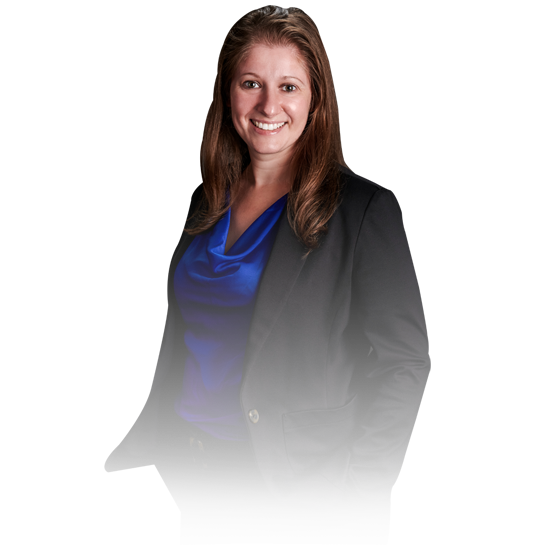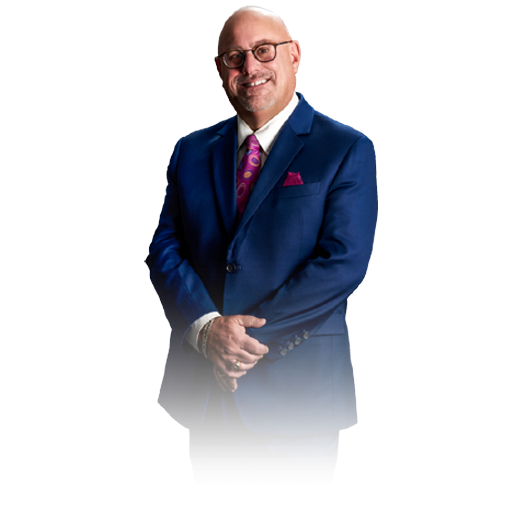In the Canlii database, there are no less than 10 decisions related to this accident, including this one from the Court of Appeal (actually there are two decisions from the Court of Appeal). The trial verdict was rendered March 9, 2012, after two mistrials, both the fault of the Plaintiffs. I mention this because in the first opening statement before the jury, the Plaintiff raised argument about the opinion of Sergio Grisolia. The second mistrial was again due to the opening statement addressing the evidence of Grisolia.
Sergio Grisolia is a police automotive service technician who filled out an inspection form. His evidence was probably key for the Plaintiffs.
For the purposes of this blog, I am going to concentrate on the plaintiff’s appeals as they relate to expert evidence. Before I do, a brief primer on expert opinion evidence.
Opinion evidence is a type of hearsay. Opinion evidence should only be admitted when a trier of fact could not draw the correct inferences from facts. Generally, we consider the facts that would give rise to this situation to be technical. In order for an expert to testify, the court must accept their qualifications to do so. This is done in a voir dire, or a hearing within the trial. The party wishing to have a witness accepted as an expert must present evidence of their qualifications, and tell the court the area of expertise they have.
In 2010, Ontario established new rules about the admissibility of expert evidence. After this trial was completed, in 2015, the Court of Appeal released a decision in Westerhof v. Gee that set out the boundaries for these new rules. In particular, Westerhof set out two types of experts, participant experts, and experts retained by the parties. A participant expert is a witness with special skill, knowledge, training, or experience who has not been engaged by or on behalf of a party to the litigation and their evidence is derived from their observations of or involvement in the underlying facts.
Background
On August 6, 2004 the defendant, Can Hoang dropped off his 6 year old son with other children at the ferry terminal while he went to park his car. As the Plaintiff Christopher began to walk across Yonge Street a gust of wind blew his hat off his head into the intersection. Christopher ran after his hat and into the intersection where he was struck by a vehicle driven by the defendant, Adriano Vicentini. Christopher suffered significant injuries.
Christopher sued Hoang, Vicentini, and Ford Credit Canada Leasing Company, the owner of the Vicentini vehicle. His sister, and his mother, asserted FLA claims.
Shortly after the accident, Police Accident Reconstruction Specialist Detective De Los Rios arrived at the scene and conducted his investigation. Three days after the accident Grisolia, inspected the Vicentini vehicle for mechanical fitness. As part of his inspection, Grisolia road tested the vehicle for brake performance.
Grisolia completed portions of a Vehicle Mechanical Examination Request form (the “Examination Form”) recording the results of his inspection. On the form, he indicated that he found defects and he had road tested the car. Regarding the brakes, Grisolia recorded that both the “friction material” and “mechanical components” were “unsatisfactory,” commenting that “front calipers sliders seized.” Grisolia also noted that several elements of the brakes were “satisfactory,” including drums/discs and service brake performance.
Both De Los Rios and Grisolia were called to testify at trial. The trial judge refused to allow Grisolia to comment on his findings about the car’s brake function because his report did not offer any opinion on brake function. She did allow De Los Rios to opine the brakes operated properly at the time of the accident.
The Plaintiff led evidence from their hired expert, Hrycay. Neither of the two expert reports that Hrycay prepared suggested that the condition of the brakes on the Vicentini vehicle contributed to the collision. Instead, both reports focused on Vicentini’s driver perception-reaction time.
At trial, the jury found that Hoang negligently caused the accident and his son’s injuries. The action was dismissed as against Vicentini and Ford Credit.
The plaintiffs appealed, asking the Court of Appeal to order a new trial on the issue of the liability of Vicentini and Ford Credit. Hoang abandoned his cross-appeal that sought to dismiss the action as against him.
The Evidence of Grisolia
At the third trial, the Plaintiffs attempted to lead expert evidence from Grisolia as to the effectiveness of the brakes on the Vincentini vehicle. In addition to the inspection form, they had him prepare a “will say” statement, but only after the selection of the jury. The trial judge ruled:
No report from Mr. Grisolia that complies with Rule 53.03 has been tendered and there is no evidence before me of any attempts made by the solicitor for the Plaintiffs to secure an opinion from Mr. Grisolia on the brakes on the Viscentini car in a form of a report that complies with Rule 53. There is nothing in the document that he completed in 2004 that sets out his opinion. What he has done is to examine the various items listed on the document and tick off the appropriate box to indicate whether the component met the Ministry standards or not. I do not say this in a critical fashion; this is the document that Mr. Grisolia is required to fill out by the police when he inspects a vehicle that has been involved in a collision. The document, however, is deficient in terms of providing the minimum information that is contemplated by Rule 53 for expert reports. I have no information as to what qualifications Mr. Grisolia has, apart from the fact that he was employed by the police to do mechanical inspections of vehicles. I do not know if he has the proper qualifications to even permit him to be qualified as an expert at trial.
In my view, on the basis of the document he completed on his inspection of the vehicle, I am not prepared to permit him to give expert testimony at this trial. To do so, in my opinion, would contravene the requirements of Rule 53 and would flout the reasoning giving rise to the amendments to the Rules governing expert evidence. The fact that the solicitor for the Plaintiff has provided a synopsis of his expected testimony does not, in my mind, get around the problems with Mr. Grisolia offering an expert opinion to this Court…
The trial judge did not have the guidance of the Court of Appeal from Westerhoff.
The Court of Appeal held that Grisolia was a participant expert (as described In Westerhoff). As a general rule, a participant expert with special skill, knowledge, training, or experience may give opinion evidence without complying with r. 53.03 where
(i) the opinion to be given is based on the witness’s observation of or participation in the events at issue; and
(ii) the witness formed the opinion as part of the ordinary exercise of his or her skill, knowledge, training, and experience while observing or participating in such events.
If a participant expert proffers opinion evidence extending beyond those limits, he or she must comply with rule 53.03 with respect to the portion of the opinion extending beyond those limits (Westeroff at para 60). A trial judge retains her gatekeeper function in relation to opinion evidence from participant experts and non-party experts. If the proffered opinion evidence does not meet the test for admissibility, it is open to the trial judge to exclude part of the opinion evidence of a participant expert.
In this case, the Plaintiffs tendered an opinion from Grisolia too late, and offered no evidence with which to qualify Grisolia at a voir dire. Further, the court found that the evidence they wanted to lead through Grisolia was available through their own Rule 53 engineer expert, but was not led. With a tip of the hat to the trial judge, Justice Darla Wilson, the Court of Appeal noted that she made these rulings consistent with Westerhof long before the court had heard let alone decided Westerhof.
Of note, on appeal they argued that it was the defendant driver’s burden to disprove negligence, and thus their report should be admissible. The Court of Appeal said this:
While s. 193(1) of the HTA places the ultimate burden of proof on the issue of negligence in a case such as the present one on the driver, it does not alter the obligation of the appellants to satisfy the trial judge that any opinion evidence they seek to adduce meets the criteria of admissibility.
The evidence of De Los Rios
Vicentini ultimately called De Los Rios at trial, and a Form 53 was served in respect of his evidence. At trial, Vicentini tendered De Los Rios to give evidence as an expert accident reconstructionist. The appellants did not object to the witness’s qualifications, and De Los Rios was qualified to offer an opinion in the area of accident reconstruction.
On appeal, they argued that he was not qualified to give the evidence he did. The Court of Appeal notes that, if no objection is made to the admissibility of evidence in a civil trial, an objection on appeal will usually be unsuccessful, and it was.
Opinion Evidence on the Ultimate Issue
At trial, Vicentini called Dr. Marc Green as a human factors expert who gave opinion evidence on Vicentini’s perception-reaction time – i.e., how long it would take Vicentini to perceive Christopher as a hazard and react to the hazard by braking or steering. It should be noted that their own expert gave his opinion on these areas, and the Plaintiff did not oppose Green’s qualification as an expert entitled to express an opinion in the area of human factors.
There is concern about the appropriateness of opinion evidence on the very issue that the jury is supposed to render their verdict on. In this case, if Mr. Vincentini was negligent in the operation of his vehicle. Obviously, this type of expert evidence should always be viewed with caution. However, there is no longer a general rule barring opinion evidence on the ultimate issue. A court should apply the criteria of necessity and the cost-benefit-analysis more strictly on evidence dealing with the ultimate issue.
Again, an appellant cannot ask for a new civil trial as of right on the ground of the inadmissibility of evidence when no objection was made in respect of the matter at trial and no substantial wrong or miscarriage was occasioned
Conclusions
This case touches on so many aspects of Ontario personal injury law: expert reports, mistrials, Sanderson orders and costs awards. This, presumably, will be the last appeal to the Court of Appeal on this claim, and shows how the post-Westerhoff expert rules play out at trial.
The take aways from this:
1. Objection! Let the record show that you object. Part of your trial strategy has to be setting yourself up for a successful appeal. As civil litigators, we sometimes give little thought to the rules of evidence, but our criminal counterparts live and die by them. In this case, a few well timed objections may have helped the cause on appeal.
2. Trial preparation is critical. If the Plaintiff had Mr. Grisolia prepare an opinion months in advance of the trial, the jury would have heard about the poor maintenance of the Vincentini vehicle.
A wise old litigator once told me that you need to write your closing argument first, otherwise you won’t know what evidence you intend to lead at trial. As it turns out, it was sage advice. It will also frame WHO you will lead that evidence from and WHAT you need to do to get that before a jury.
If you have a question about this blog or a similar file, please contact Eric Grossman at 416-777-5222.















